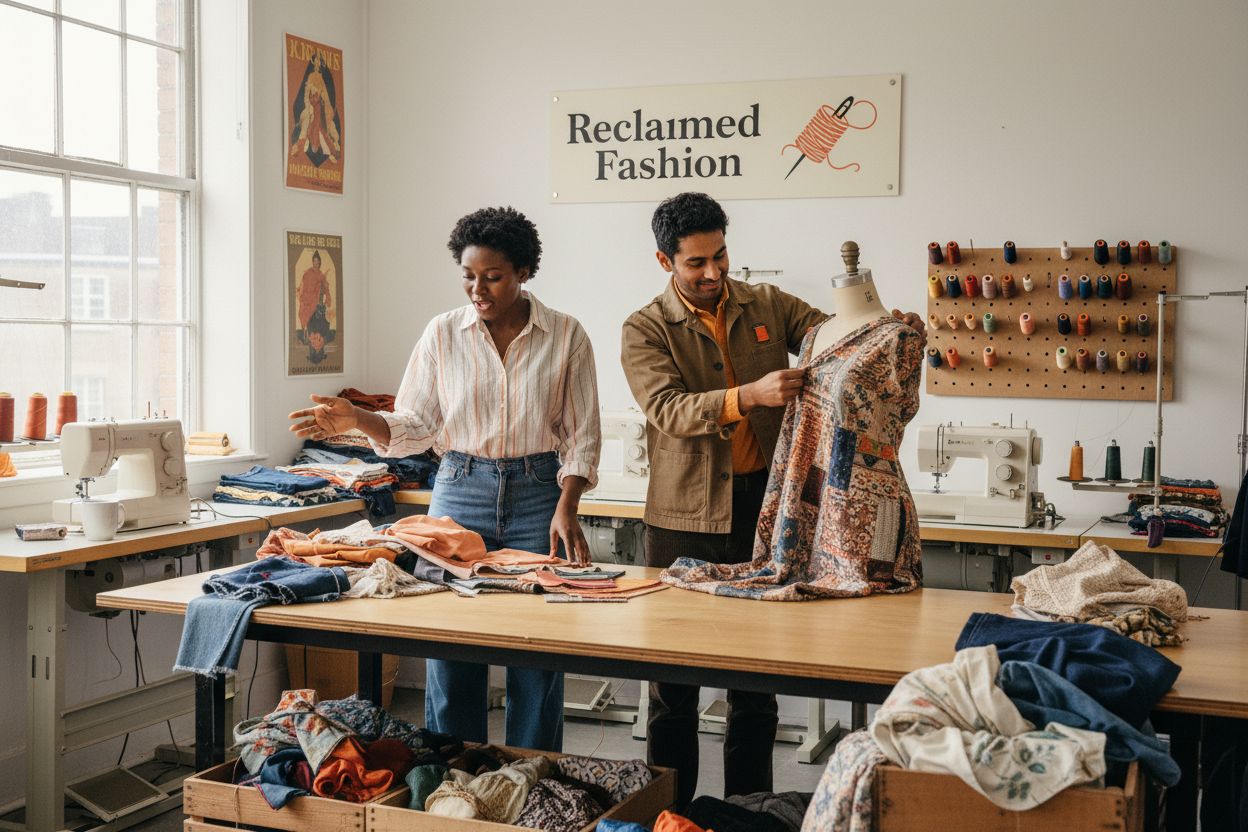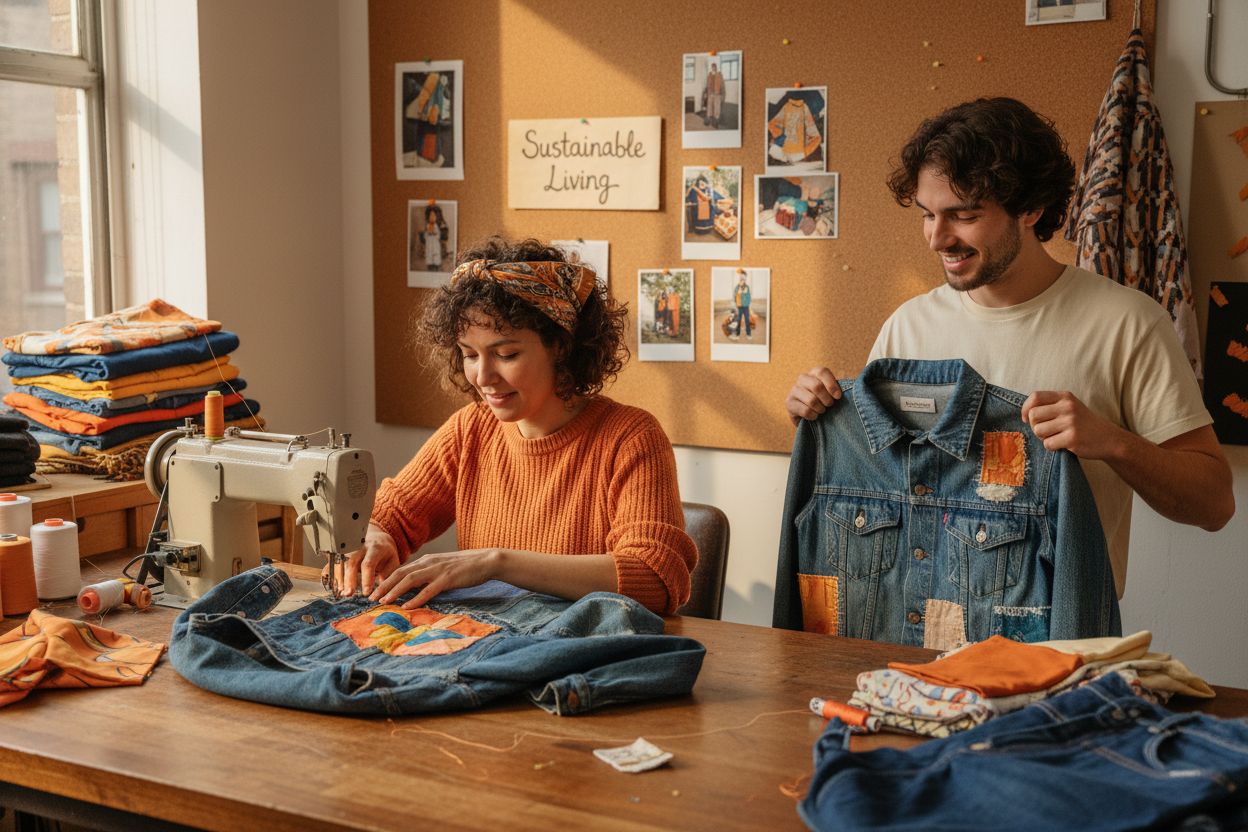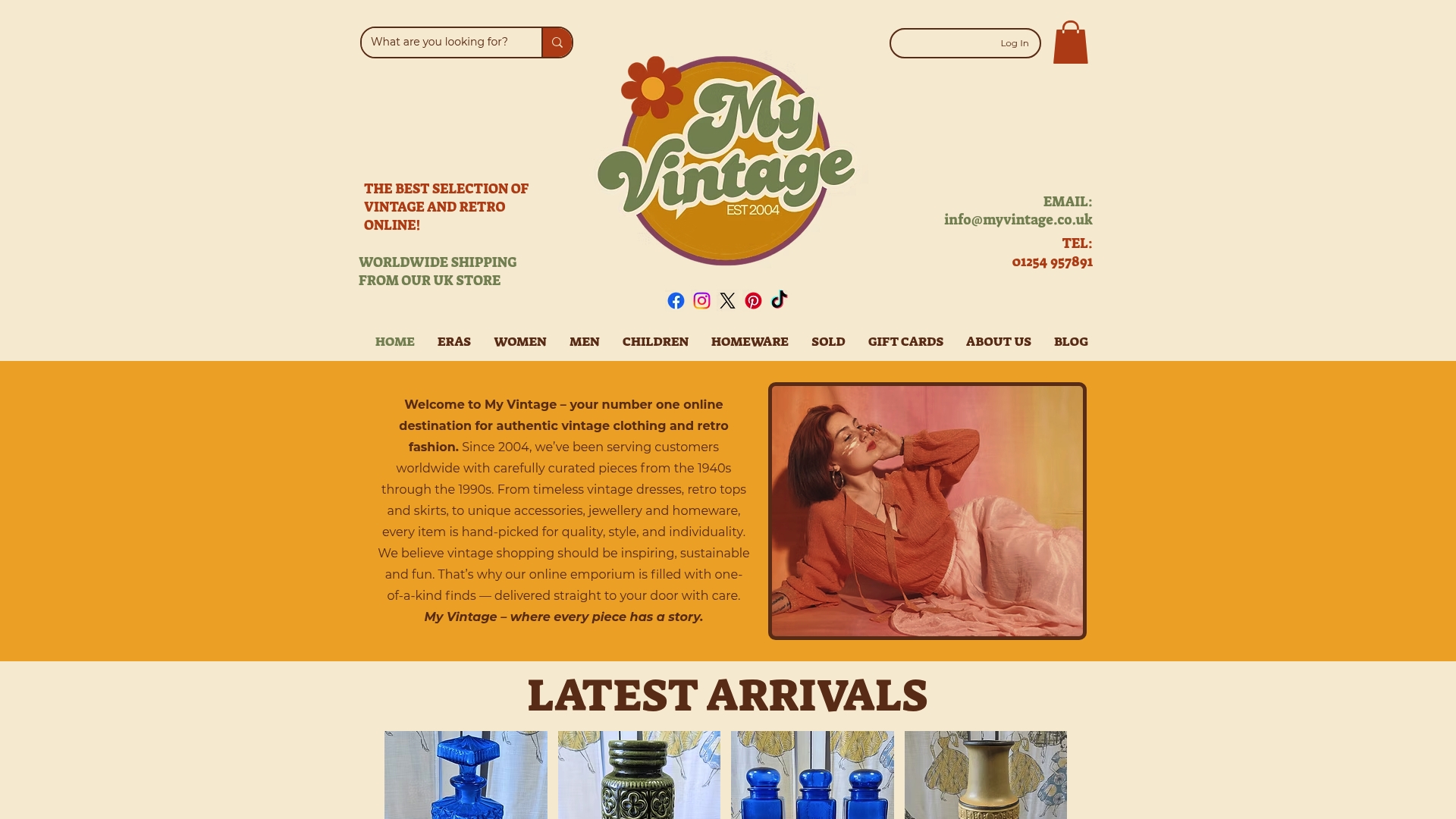What Is Reclaimed Fashion? Understanding Its Significance
- Emma

- Oct 12
- 8 min read

Reclaimed fashion is changing the way we think about clothing and waste. Every year the fashion industry sends millions of garments to landfill, yet reclaimed designers see treasure where others see trash. Instead of something old or irregular, each piece is reborn as a unique work of art carrying both history and future potential all at once.
Table of Contents
Quick Summary
Takeaway | Explanation |
Reclaimed fashion reduces textile waste. | This approach intercepts materials from landfills, transforming waste into valuable fashion items, directly addressing environmental challenges. |
Supports local artisans and small businesses. | By focusing on reclamation, this fashion trend creates economic opportunities while reducing reliance on mass production models. |
Emphasises creativity and craftsmanship. | Reclaimed fashion values unique design and historical techniques, promoting clothing as artworks rather than disposable products. |
Encourages mindful consumerism. | Each reclaimed piece fosters a cultural shift towards valuing sustainability, inviting consumers to invest in long-lasting clothing. |
Adopts innovative textile transformation methods. | Techniques like deconstruction and upcycling breathe new life into materials, showcasing the potential of existing textiles in contemporary design. |
Defining Reclaimed Fashion: What It Is
Reclaimed fashion represents a transformative approach to clothing and textile consumption that goes far beyond traditional vintage or second-hand shopping. At its core, reclaimed fashion is about breathing new life into existing garments, textiles, and materials through creative reimagining, restoration, and repurposing.
The Essence of Reclamation
Unlike standard second-hand clothing, reclaimed fashion involves a deliberate process of intervention and reinvention. Designers and craftspeople carefully select existing textiles, clothing, or materials that might otherwise be discarded and transform them into entirely new, unique pieces. This approach involves techniques such as:
Deconstructing original garments and reconstructing them into new designs
Repairing and reinforcing damaged clothing to extend its lifecycle
Upcycling materials from multiple sources to create entirely original pieces
Preserving historical textile techniques while introducing contemporary design elements
Understanding the benefits of sustainable fashion reveals how reclaimed fashion is not just a design philosophy, but a critical response to the environmental challenges posed by traditional textile production.
Environmental and Creative Significance
Reclaimed fashion represents more than just an aesthetic choice; it is a powerful statement about sustainability and creative reuse. By intercepting textiles that would typically end up in landfills, these practices dramatically reduce waste and challenge the traditional linear model of fashion consumption.
Each reclaimed piece tells a story of transformation, carrying with it the history of its original materials while presenting a completely new narrative.
The process requires significant skill, creativity, and vision. Designers working in reclaimed fashion must possess not only technical expertise in garment construction but also a deep understanding of textile properties, historical fashion techniques, and contemporary design trends. They are part historian, part artist, and part environmental activist, turning what might be considered waste into wearable art.
This table compares reclaimed fashion to traditional second-hand clothing, highlighting distinct characteristics that define their respective approaches and benefits.
Feature | Reclaimed Fashion | Traditional Second-Hand Clothing |
Intervention Level | High – creative transformation and upcycling | Low – resale of existing garments |
Uniqueness of Pieces | Highly unique, individual works | Varies; duplication likely |
Techniques Used | Deconstruction, reconstruction, artistic repair | Basic cleaning, minor repairs |
Value Addition | Substantial – new design and narrative | Minimal – item is resold as is |
Skill & Craftsmanship Required | Advanced (design, sewing, innovation) | Basic (sorting, cleaning, minor mending) |
The Importance of Reclaimed Fashion in Sustainable Living
Reclaimed fashion has emerged as a powerful solution to address critical environmental challenges within the textile and clothing industry, representing far more than a passing trend. By reimagining and repurposing existing materials, this approach offers a transformative pathway towards more sustainable consumption patterns and reduced environmental impact.
Reducing Environmental Waste
The fashion industry currently generates an extraordinary volume of textile waste, with millions of garments discarded annually. Reclaimed fashion directly confronts this problem by intercepting potential waste and converting it into valuable, wearable pieces. Vintage Clothing - The Ultimate Sustainable Fashion Choice demonstrates how extending clothing lifecycles can dramatically reduce environmental strain.
Key environmental benefits of reclaimed fashion include:
Preventing textiles from entering landfills
Reducing demand for new raw material production
Minimising water consumption associated with textile manufacturing
Lowering carbon emissions linked to clothing production
Economic and Social Impact
Beyond environmental considerations, reclaimed fashion generates significant economic and social value. The practice supports local artisans, small businesses, and independent designers who specialise in transformative clothing restoration. It creates economic opportunities while challenging the mass production model of contemporary fashion.
Moreover, reclaimed fashion promotes a cultural shift towards valuing craftsmanship, individual creativity, and mindful consumption. By celebrating the history and potential of existing textiles, this approach encourages consumers to view clothing as long-term investments rather than disposable commodities. Each reclaimed piece becomes a statement of personal style, environmental consciousness, and appreciation for unique design.
The table below outlines key environmental, economic, and social impacts of reclaimed fashion, providing a clear overview of the practice’s broad significance.
Area of Impact | Reclaimed Fashion Contribution |
Environmental Waste | Prevents textiles from entering landfills; reduces need for new materials |
Resource Consumption | Minimises water use and lowers carbon emissions compared to new production |
Economic Value | Supports independent designers, small businesses, and artisan communities |
Social Impact | Promotes craftsmanship, individuality, and cultural appreciation |
Consumer Behaviour | Encourages investment in long-lasting, sustainable garments |

How Reclaimed Fashion Works: The Process Explained
Reclaimed fashion transforms existing textiles through a sophisticated and creative process that requires technical skill, artistic vision, and deep understanding of material potential. This intricate approach goes beyond simple repair or alteration, representing a comprehensive reimagining of textile possibilities.
Sourcing and Selection
The initial stage of reclaimed fashion involves meticulous material selection. Designers and craftspeople carefully evaluate potential textiles, examining factors such as fabric quality, structural integrity, historical significance, and potential for transformation. They seek materials with unique characteristics that can be repurposed into new, innovative designs.
Critical considerations during sourcing include:
Assessing textile condition and durability
Evaluating potential for structural reconstruction
Understanding fabric composition and performance characteristics
Identifying unique design potential within existing materials
Bespoke: The Art of Upcycling Vintage Clothing illuminates how skilled artisans can breathe new life into seemingly worn-out garments through creative intervention.
Technical Transformation Techniques
Once selected, reclaimed textiles undergo a series of sophisticated transformation techniques. These may include deconstruction, where garments are carefully taken apart to understand their original construction, followed by strategic reconstruction using innovative pattern-cutting methods. Designers might combine multiple textile sources, integrating different fabric weights, textures, and historical periods into a single cohesive piece.
The process demands exceptional technical skills, blending traditional craftsmanship with contemporary design sensibilities. Each transformation is a unique journey, turning discarded materials into wearable narratives that challenge conventional fashion production methods and celebrate individual creativity.
Key Concepts in Reclaimed Fashion: What to Know
Reclaimed fashion represents a nuanced approach to textile consumption that goes beyond traditional recycling or second-hand purchasing. Understanding its core principles requires exploring a complex ecosystem of design, sustainability, and creative transformation.
Philosophical Foundations
At its essence, reclaimed fashion challenges conventional production models by viewing textiles as living materials with ongoing potential, rather than disposable commodities. This philosophy emphasises perpetual value and material regeneration, transforming how we conceptualise clothing’s lifecycle.
Key philosophical principles include:
Valuing material history and inherent textile narratives
Prioritising creative restoration over replacement
Challenging linear consumption patterns
Recognising clothing as cultural and environmental artefacts
What is Thrift Fashion? Understanding Its Impact and Appeal provides complementary insights into alternative fashion consumption strategies that align with reclaimed fashion’s core principles.
Technical and Design Considerations
Reclaimed fashion demands sophisticated technical skills that blend craftsmanship, material science, and innovative design thinking. Practitioners must possess deep understanding of textile properties, construction techniques, and creative problem-solving approaches. They transform existing materials through complex processes of deconstruction, re-imagination, and reconstruction.
The approach requires practitioners to view materials not as static objects, but as dynamic resources with evolving potential. Each textile carries its own structural memory, wear patterns, and unique characteristics that skilled designers can strategically leverage in creating new, meaningful pieces that transcend traditional fashion boundaries.
Real-World Examples of Reclaimed Fashion Impact
Reclaimed fashion transcends theoretical concepts, demonstrating tangible environmental and social transformations through innovative design practices and creative textile interventions. These real-world examples showcase how designers and brands are revolutionising textile consumption and challenging traditional production paradigms.
Innovative Design Transformations
Contemporary designers are pushing boundaries by converting discarded materials into extraordinary fashion pieces. Some remarkable examples include designers who transform industrial waste textiles into haute couture garments, turning abandoned warehouse fabrics, discontinued uniform materials, and even technical textiles into stunning, wearable art.
Notable approaches include:
Converting industrial sail cloths into weatherproof jackets
Repurposing military surplus fabrics into contemporary streetwear
Transforming automotive seat materials into avant-garde fashion pieces
Reconstructing vintage hotel linens into elegant evening wear
Understanding the Advantages of Sustainable Fashion provides additional context on how these innovative practices contribute to broader sustainability goals.
Global Impact and Community Empowerment
Reclaimed fashion extends beyond aesthetic innovation, creating significant social and economic opportunities. In many communities worldwide, textile reclamation has become a powerful tool for economic resilience, enabling local artisans to develop sustainable businesses by transforming discarded materials into valuable products.
These practices not only reduce waste but also preserve traditional craftsmanship, create employment opportunities, and challenge the environmental destruction caused by fast fashion’s linear production model. Each reclaimed piece represents a small but significant act of resistance against global textile waste, demonstrating how individual creative choices can generate meaningful collective impact.
Step Into the Real Impact of Reclaimed Fashion with My Vintage
Are you inspired to embrace reclaimed fashion but unsure where to find truly unique, sustainable pieces with real history? The article highlights how textile waste and fast fashion undermine our environment and creativity, urging a shift towards restored, repurposed, and upcycled clothing. If you want to break away from throwaway trends, My Vintage gives you access to authentic vintage treasures from the 1940s to the 1990s, each garment carefully selected for its individuality and timeless appeal. Discover how genuine reclaimed fashion can tell a new story for your style and contribute to ethical, eco-friendly living.

Make a conscious swap today. Browse the latest unique vintage clothing and retro homeware on My Vintage. Find exclusive items that champion sustainability and creativity—every purchase is a step towards a more thoughtful and inspired wardrobe. Explore My Vintage now and experience the true value of reclaimed fashion firsthand.
Frequently Asked Questions
What is reclaimed fashion?
Reclaimed fashion is a creative approach to clothing that involves reimagining and repurposing existing textiles and garments. This process includes techniques like deconstruction, upcycling, and restoration, allowing designers to create unique pieces from materials that might otherwise be discarded.
Why is reclaimed fashion significant for sustainability?
Reclaimed fashion plays a vital role in sustainability by reducing textile waste and the demand for new materials. By choosing reclaimed pieces, you can minimize your environmental impact, potentially cutting waste generation in fashion by as much as 50% when compared to fast fashion purchases.
How do designers select materials for reclaimed fashion?
Designers in reclaimed fashion meticulously select materials based on factors like quality, durability, and historical significance. To get involved, consider sourcing your own vintage textiles or encouraging local artisans to explore unique fabric options from discarded garments.
What techniques are commonly used in the creation of reclaimed fashion?
Common techniques in reclaimed fashion include deconstructing original garments, repairing worn items, and upcycling various materials into new designs. If you’re interested in making reclaimed pieces yourself, start by learning basic sewing skills and experimenting with old clothes to create something new.
How does reclaimed fashion impact local economies?
Reclaimed fashion supports local artisans and small businesses by promoting sustainable practices and individual craftsmanship. Engaging with these communities can help create job opportunities and encourage a cultural shift towards valuing handmade, eco-friendly fashion.
What can I do to support reclaimed fashion practices?
To support reclaimed fashion, consider buying second-hand or upcycled garments and advocating for sustainable fashion principles. You could also participate in workshops or host events focused on repairing and repurposing clothing, helping to foster a community of mindful consumers.
Recommended






Comments